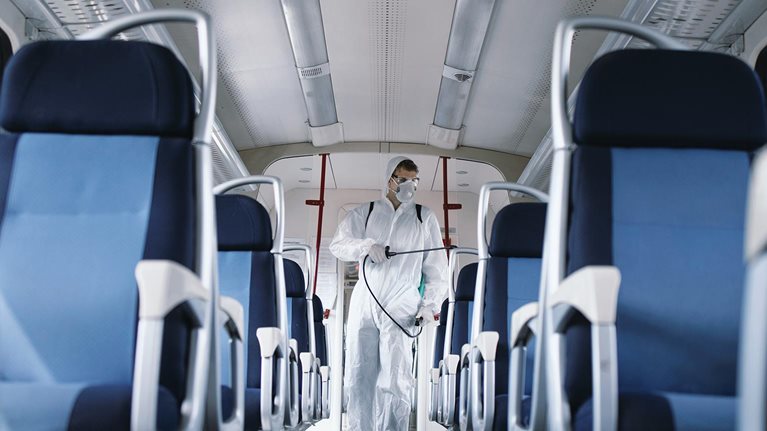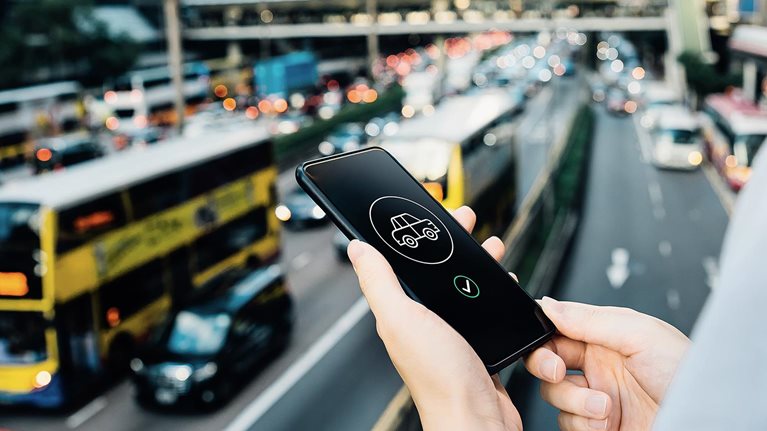The COVID-19 pandemic led to a significant drop in the use of public transit the world over. Tokyo was no exception. In the months after the outbreak, the city’s rapid-transit system saw a marked decline in ridership. In response, operators adopted new digital technologies to prevent congestion, improved ventilation on train cars, and began envisioning a more harmonious relationship between subway stations and communities. These changes offer a glimpse of what public transit—in Tokyo and in other cities and countries around the world—may look like in the years to come.
The following lightly edited interview with Tokyo Metro CEO Akiyoshi Yamamura was conducted in April 2021.
What are the biggest challenges for metros and other forms of public transit after COVID-19?
Metros and other forms of public transit are industries as well as places where people gather together, yet COVID-19 has instilled the idea that people should not gather. In Japan, the experience of riding packed trains every morning and night is disappearing, and people are becoming accustomed to not having to spend time commuting each day.
As a result, people will start personalizing the times and locations of their travels, and transportation revenue will decline dramatically. In fact, we are prepared for a post-COVID-19 reduction in sales of around 15 percent. But if we think over the long term, this simply means that some of the predictions around depopulation are materializing ten years earlier than originally expected. The number of trips per person was steadily decreasing even before COVID-19, so the pandemic essentially accelerated a shift in behavior that was already in motion.
Regarding the drop in ridership, what steps did the system take to restore traveler confidence, and how did customers respond?
After March 2020, we took measures to open windows in our train cars. We also took antivirus measures in stations by November and in train cars by summer. We’ve heard from customers that these changes made them feel safer, and I think creating a safe environment is our primary duty.
Recently, even though passenger load factors have reached 120 percent during peak hours, there have been no COVID-19 clusters, so we have been successful in creating an environment with low risk of infection. We have also started to visualize ridership congestion and now provide a route-searching service via smartphones to support customer behavior to avoid slowdown.
How have you adapted your approach to meet evolving customer needs?
Changes in customer behavior are clearly reflected by the numbers. Commuter-pass usage is down 30 percent, and employees at many companies in the metro area are working from home. As an example, traffic at the Ōtemachi Station is down 46 percent. Furthermore, there is a tendency for customers to be dispersed before and after the rush.
The trend toward reduced commuting is unavoidable, so we’re encouraging people to use the metro in their free time rather than for work. Until now, we have been supported by commuter-centric rail demand, but moving forward we want riders to focus on enjoying the city. We call this “city tourism.” In other words, there are a lot of green, versatile spaces in Tokyo, allowing people to have all kinds of memorable experiences. I think of this as a kind of mobility as a service.
On the topic of operations, Tokyo is one of the smartest cities in the world. What does digital leadership in public transportation look like today?
Japan has always been too focused on providing extremely good service. Unless this focus shifts, we won’t be able to make better use of digital technologies.
That said, one way we can take advantage of meticulous service and digital technologies is using historical railway-traffic data. Although we’ve been doing this for a long time, we can now tell the location of each car, predict how much a particular car will be delayed at a particular time, and use that information to optimize operations.
We’ve also started using condition-based management-maintenance strategies, which involve installing sensors in train cars to assess their operational status, communicating that status via the Internet of Things, and analyzing those data to predict failures. On the Marunouchi Line, for example, brake and air-pressure readings are constantly relayed to maintenance workers.
Our most recent innovation is the development of a so-called congestion-measurement system that uses cameras and AI to identify which cars are crowded and then create routes to avoid them. This system is the first of its kind in Japan and was installed in stations in April of this year. It can accurately grasp the number of people, not unlike the human eye—even while a train is passing by.
Finally, as a digital leader in the railway industry, we plan to continue actively engaging in similar efforts. We want to leave repetitive, high-volume work to digital technologies or AI [artificial intelligence], while putting human beings in charge of decision making and more creative work.
How can public-transit operators respond to the ongoing competition posed by ridesharing services as well as the eventual advent of autonomous vehicles?
Although public transit and ridesharing services are often thought of as competitors, together they can bring about positive changes for Tokyo Metro. Taxis, shared bicycles, and buses all have their own mobility characteristics and their own advantages, and it’s best if they are combined to complete a trip.
I think it’s important to personalize things, so when commuting to the office, it’s fine to walk there, to walk past a couple of stations instead of just one, or even to cycle. As long as people are encouraged to go out into the world and take advantage of these options, it will make everyone’s lives richer than they were before. I think that’s a positive thing.
Taking advantage of shared mobility options on weekdays and weekends—or even holidays—for enjoyment or relaxation could cancel out any negative effects stemming from a decrease in the overall number of metro trips. As a result, we will see a positive effect on our revenues.
What will Tokyo Metro look like in ten years?
I think COVID-19 has given us an opportunity to change society for the better. We can reevaluate a variety of services and allow people to freely choose times and locations for travel that may have never occurred to them in the past. In this sense, the post-COVID-19 era could lead to increased happiness for people and society. But if that’s all that happens, the transportation industry could die out, so we can’t just stand idly by and do nothing. We must create a more personalized world.
We must think of metro stations and communities as being in harmony with one another. Toranomon Hills Station, our newest station, is a good example of this harmony. Same with Nihombashi Station.
At Tokyo Metro, we want to be a company that builds appealing stations in appealing neighborhoods. Doing so can hopefully satisfy many different needs, such as ensuring riders can easily reach their offices after leaving the station. Part of this vision of stations in harmony with communities is creating access to green spaces and building offices that are not cold and inorganic, as well as providing people with options for entertainment, supermarkets, and other shared spaces nearby.
Overall, if people are relaxed and spending their days doing what they like, then we will see urban travel as a positive thing. I think careful cooperation between the government and urban real-estate developers will be an important part of accomplishing this.


